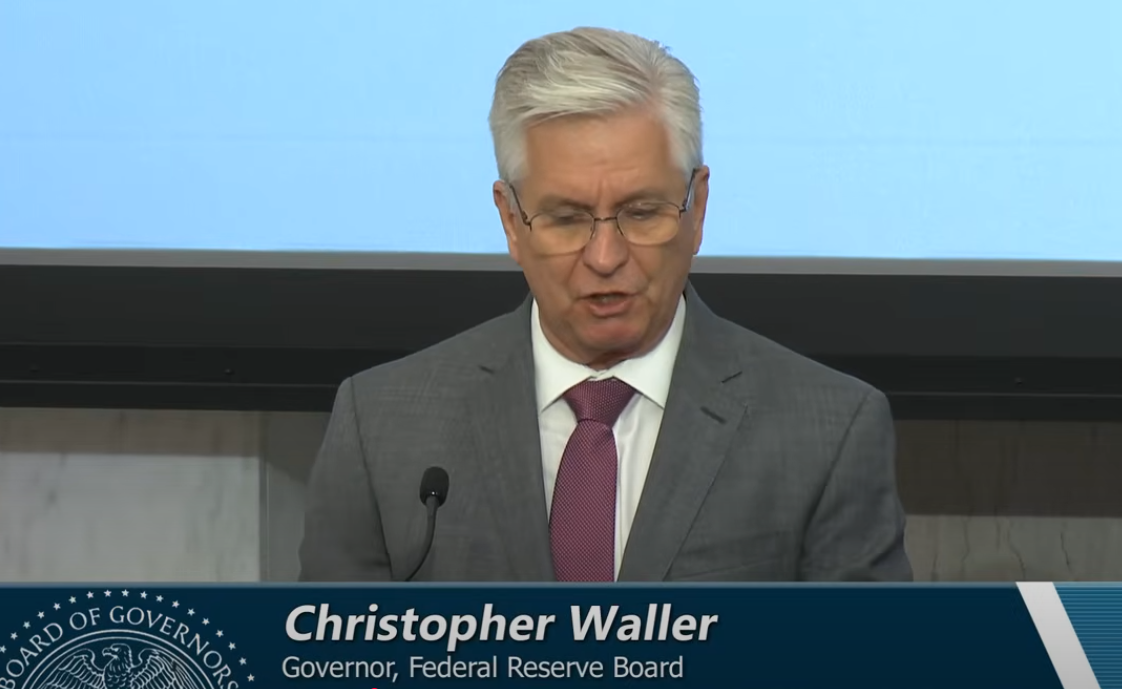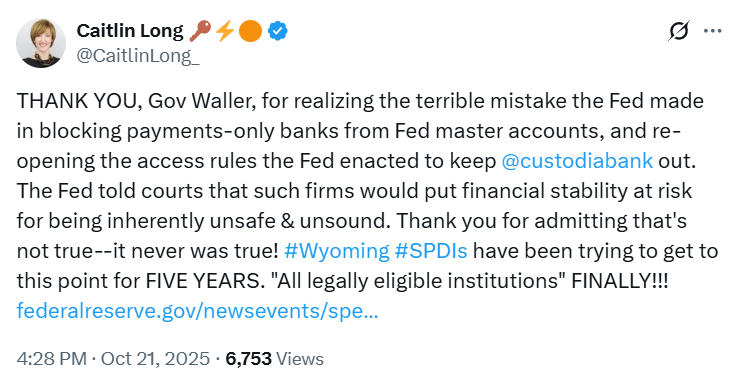The US Federal Reserve is exploring “skinny” master accounts, or payment accounts, to provide fintech and crypto firms with direct access to its payment system, addressing past banking exclusion issues known as Operation Chokepoint 2.0 and signaling improved integration with traditional finance.
-
Fed Governor Christopher J. Waller proposed payment accounts for smaller institutions to access Fed payment rails safely.
-
These accounts aim to support innovation in payments without full master account privileges, mitigating risks.
-
Industry experts like Caitlin Long hail this as a reversal of prior restrictions that blocked crypto-friendly banks.
Discover how the Federal Reserve’s proposed payment accounts could end crypto’s banking woes. Learn about skinny master accounts and their impact on fintech integration today.
What Are the Federal Reserve’s Proposed Payment Accounts?
Federal Reserve payment accounts represent a new category of limited-access accounts designed to enable smaller financial institutions, including fintech and crypto-related companies, to connect directly to the central bank’s payment infrastructure. Proposed by Fed Governor Christopher J. Waller, these “skinny” versions of traditional master accounts would grant essential payment services while imposing safeguards to manage risks. This initiative aims to foster innovation in the payment ecosystem by broadening participation beyond large banks.
The Federal Reserve currently restricts full master accounts to major depository institutions, leaving many fintech firms reliant on third-party banks for access. Waller’s suggestion, outlined in a speech at the Payments Innovation Conference, seeks to rectify this by offering a streamlined alternative. Eligible entities would gain the ability to process payments through Fed rails like Fedwire and ACH, promoting efficiency and inclusion in the financial system.

Federal Reserve Governor Christopher J. Waller speaking at the Payments Innovation Conference. Source: YouTube
While still in the exploratory phase, this development reflects the Fed’s broader commitment to modernizing payments amid rapid technological advancements. By controlling access levels, the Fed intends to balance innovation with stability, ensuring that emerging players contribute to a robust payment landscape without introducing undue vulnerabilities.
How Do Skinny Master Accounts Address Crypto Banking Challenges?
Skinny master accounts, or payment accounts, directly tackle the debanking issues that have plagued the crypto industry for years. Under previous administrations, numerous crypto and tech founders reported denied banking services, an effort insiders labeled Operation Chokepoint 2.0—a systematic pressure on banks to sever ties with digital asset firms. According to reports from affected parties, at least 30 such incidents occurred, disrupting operations and stifling growth.
The 2023 collapses of crypto-friendly banks like Silvergate and Signature heightened these concerns, with critics including venture capitalist Nic Carter arguing it reflected government overreach. Caitlin Long, founder and CEO of Custodia Bank, publicly welcomed Waller’s proposal, stating in a social media post: “THANK YOU, Gov Waller, for realizing the terrible mistake the Fed made in blocking payments-only banks from Fed master accounts, and re-opening the access rules the Fed enacted to keep @custodiabank out.” She further emphasized that the Fed’s prior claims of financial instability risks were unfounded.
This shift could enable crypto payment processors and exchanges to handle transactions more reliably, reducing dependency on intermediary banks prone to regulatory pressures. Data from industry analyses indicate that improved Fed access could lower operational costs by up to 20% for fintechs, based on efficiency gains in payment settlement times. Experts note that such integration would align crypto with traditional finance, potentially attracting more institutional investment while upholding compliance standards.
Waller highlighted the need for risk controls, explaining that payment accounts would provide core services like fund transfers without exposing the Fed to broader balance sheet liabilities. This measured approach draws from consultations with payment industry stakeholders, ensuring the model supports diverse entities while safeguarding the overall system.

Source: Caitlin Long
Beyond immediate access, the proposal underscores the Fed’s proactive stance on innovation. Waller noted ongoing research into tokenization and smart contracts, which could further bridge crypto technologies with central bank systems. For instance, tokenization experiments have shown potential to reduce settlement times from days to seconds, enhancing liquidity in digital asset markets.
Frequently Asked Questions
What Is Operation Chokepoint 2.0 and How Does It Relate to Crypto Firms?
Operation Chokepoint 2.0 refers to alleged regulatory actions during the Biden administration that pressured banks to deny services to crypto and tech companies, citing risk concerns. At least 30 founders faced debanking, as documented by industry reports. The Fed’s payment accounts proposal counters this by offering direct access, potentially restoring fair banking opportunities for legitimate crypto operations.
Will the Federal Reserve’s Payment Accounts Benefit Crypto Payment Processors?
Yes, these accounts would allow crypto payment processors to connect directly to Fed systems, streamlining transactions and reducing reliance on third parties. As Waller explained, they enable participation for institutions handling payments, which could cut costs and improve speed for crypto firms integrating with traditional rails, making voice queries about crypto banking access more straightforward.
Key Takeaways
- Expanded Access: Payment accounts open Fed payment rails to smaller fintech and crypto entities, ending exclusionary practices.
- Risk Management: Limited privileges ensure stability, with Waller emphasizing controlled exposure for the central bank.
- Industry Relief: Leaders like Caitlin Long view this as validation that prior restrictions were misguided, urging crypto firms to prepare for integration.
Conclusion
The Federal Reserve’s exploration of payment accounts and skinny master accounts marks a pivotal step toward resolving the crypto industry’s longstanding banking access barriers. By drawing on expertise from figures like Christopher J. Waller and addressing past issues such as Operation Chokepoint 2.0, this initiative promotes a more inclusive financial ecosystem. As the Fed advances research into blockchain and AI-driven payments, stakeholders can anticipate enhanced efficiency and innovation, positioning crypto for sustainable growth within traditional finance frameworks. Financial professionals and crypto enthusiasts alike should monitor these developments closely for emerging opportunities.







